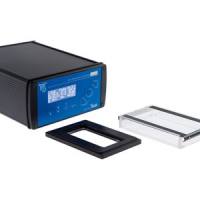Freezing Embryonic Stem (ES) Cell Clones in 96-Well Plates
互联网
Freezing Embryonic Stem (ES) Cell Clones in 96-Well Plates the Laboratory of Dr. Allan Bradley
Baylor College of Medicine, Houston, Texas 冻存96空板中的胚胎干细胞克隆
Freezing Embryonic Stem (ES) Cell Clones in 96-Well Plates
1. Refeed cells 2-3 hours before use.
2. Check each well for confluence and number of clones.
Selectively passage clones which have less than 10
colonies per well to another multiwell plate.
3. Aspirate off all of the media and wash 2 times with PBS.
4. Using the multi-channel pipetter, add 50 ul of trypsin
to each of the wells. Change pipette tips between wells!
5. Incubate @ 37o C for 10-15 minutes.
6. Add 50 ul of 2X Freezing Media (60% DMEM, 20% FCS, 20% DMSO)
to each well and break up the colonies by pipetting up-and-down
about 5 times.
7. If required, remove 25 ul of the cell suspension and
pipette directly into a new multiwell plate. If the
cells are being grown up for Southern analysis, use a
pre-gelatinized plate containing 200 ul of fresh M15 media
per well. Alternatively, if the clones are being screened
using PCR, use a 96-well plate containing PCR Lysis Buffer
(50 ul + Proteinase K), lysing the cells either individually
or in appropriately mixed pools.
8. Using the multi-channel pipetter, add 100 ul of
filter-sterilized (0.22 um) Light Paraffin Oil to each well.
This prevents degassing and evaporation during storage @ -70o C.
9. Replace the lid on the plate and secure by completely sealing
with tape around all the edges. Place the plate in a
polystyrene cuvette box, cover with a polystyrene lid
that fits, secure with tape, and freeze @ -70o C (the
temperature optimally should drop approximately 1o C/minute).
10. For samples being screened by PCR, take the plate of
cells in PCR Lysis Buffer (prepared in step 7, above) and
place @ 55o C for 1 hour to overnight. Adequate steps must
be taken to avoid evaporation (e.g., addition of oil to
cover each well and/or incubation in a humidified chamber,
such as a sealed plastic container with a wet sponge inside).
After incubation, the lysates may be stored @ -20o C.
However, prior to use for PCR, the Proteinase K must be
inactivated by transferring the lysates to labelled 0.5 ml
Eppendorf tubes and heating @ 94o C for 15 minutes
(Program #99 in the PCR machine).
11. To retrieve ES cell clones that have been frozen by this
method, take the 96-well plate from the -70o C freezer and
place directly into the 37o C incubator. Allow all of the
wells to thaw completely (this may take 10-15 minutes for
the wells near the center of the plate), then remove the
clones from the wells and transfer to appropriately labelled
wells in 24-well feeder plates pre-equilibrated with 2 ml of
M15 media per well. For maximum recovery of sample, it is
important to vigorously pipette the thawed cells to dislodge
them from the bottom of the plate (where they settle during
the freezing process). Since the cells tend to accumulate
around the perimeter of the wells as a consequence of the
minimal freezing volume, rinse the wells with media to further
facilitate maximum recovery and transfer to the appropriate
wells in the 24-well feeder plates. There is no need to remove
the DMSO and the paraffin oil until the cells have replated
(24 hours after passage).
From the Laboratory of Dr. Allan Bradley
Baylor College of Medicine, Houston, Texas









